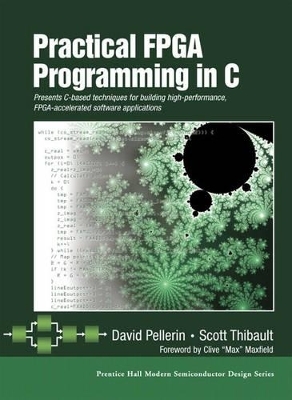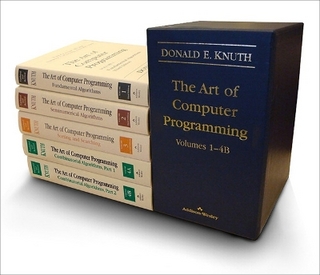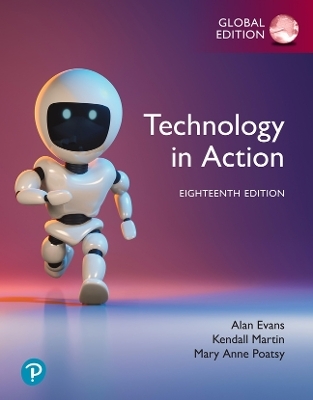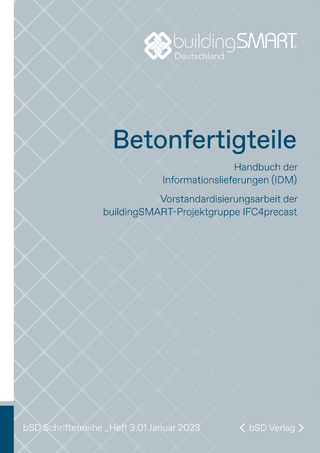
Practical FPGA Programming in C
Prentice Hall
978-0-13-154318-8 (ISBN)
- Titel ist leider vergriffen;
keine Neuauflage - Artikel merken
During the past few years of tech sector economic decline,which has touched
the EDA/semiconductor industries, two companies have had consistent
double digit growth. They are Xilinx and Altera. Their business is FPGA
design. Advances in FPGA technologies have made FPGA design a low cost
alternative to very expensive unreconfigurable ASIC design.
Author Bio David Pellerin is president and founder of Impulse Accelerated Technologies, a firm that serves systems designers who want to use FPGAs for hardware-based software acceleration and fast prototyping of mixed hardware/software systems. His Prentice Hall PTR books include VHDL Made Easy, Practical Design Using Programmable Logic, Digital Design Using ABEL, and Electronic Design Automation for Windows. Scott Thibault is president and founder of Green Mountain Computing Systems, developers of custom and OEM software that leverages advanced HDL and C-to-RTL expertise to improve time-to-market. Dr. Thibault holds a Ph.D. in computer science from the University of Rennes. © Copyright Pearson Education. All rights reserved.
Foreword by Clive "Max" Maxfield.
Why is this book of interest to the hardware folks?
And what about the software guys and gals?
So what's the catch?
Preface.
C Language for FPGA-Based Hardware Design?
Compelling Platforms for Software Acceleration.
The Power to Experiment.
How This Book Is Organized.
Where This Book Came From.
Acknowledgments/
1. The FPGA as a Computing Platform.
A Quick Introduction to FPGAs.
FPGA-Based Programmable Hardware Platforms.
Increasing Performance While Lowering Costs.
The Role of Tools.
The FPGA as an Embedded Software Platform.
The Importance of a Programming Abstraction.
When Is C Language Appropriate for FPGA Design?
How to Use This Book.
2. A Brief History of Programmable Platforms.
The Origins of Programmable Logic.
Reprogrammability, HDLs, and the Rise of the FPGA.
Systems on a Programmable Chip.
FPGAs for Parallel Computing.
Summary.
3. A Programming Model for FPGA-Based Applications.
Parallel Processing Models.
FPGAs as Parallel Computing Machines.
Programming for Parallelism.
Communicating Process Programming Models.
The Impulse C Programming Model.
Summary.
4. An Introduction to Impulse C.
The Motivation Behind Impulse C.
The Impulse C Programming Model.
A Minimal Impulse C Program.
Processes, Streams, Signals, and Memory.
Impulse C Signed and Unsigned Datatypes.
Understanding Processes.
Understanding Streams.
Using Output Streams.
Using Input Streams.
Avoiding Stream Deadlocks.
Creating and Using Signals.
Understanding Registers.
Using Shared Memories.
Memory and Stream Performance Considerations.
Summary.
5. Describing a FIR Filter.
Design Overview.
The FIR Filter Hardware Process.
The Software Test Bench.
Desktop Simulation.
Application Monitoring.
Summary.
6. Generating FPGA Hardware.
The Hardware Generation Flow.
Understanding the Generated Structure.
Stream and Signal Interfaces.
Using HDL Simulation to Understand Stream Protocols.
Debugging the Generated Hardware.
Hardware Generation Notes.
Making Efficient Use of the Optimizers.
Language Constraints for Hardware Processes.
Summary.
7. Increasing Statement-Level Parallelism.
A Model of FPGA Computation.
C Language Semantics and Parallelism.
Exploiting Instruction-Level Parallelism.
Limiting Instruction Stages.
Unrolling Loops.
Pipelining Explained.
Summary.
8. Porting a Legacy Application to Impulse C.
The Triple-DES Algorithm.
Converting the Algorithm to a Streaming Model.
Performing Software Simulation.
Compiling to Hardware.
Preliminary Hardware Analysis.
Summary.
9. Creating an Embedded Test Bench.
A Mixed Hardware and Software Approach.
The Embedded Processor as a Test Generator.
The Role of Hardware Simulators.
Testing the Triple-DES Algorithm in Hardware.
Software Stream Macro Interfaces.
Building the Test System.
Summary.
10. Optimizing C for FPGA Performance.
Rethinking an Algorithm for Performance.
Refinement 1: Reducing Size by Introducing a Loop.
Refinement 2: Array Splitting.
Refinement 3: Improving Streaming Performance.
Refinement 4: Loop Unrolling.
Refinement 5: Pipelining the Main Loop.
Summary.
11. Describing System-Level Parallelism.
Design Overview.
Performing Desktop Simulation.
Refinement 1: Creating Parallel 8-Bit Filters.
Refinement 2: Creating a System-Level Pipeline.
Moving the Application to Hardware.
Summary.
12. Combining Impulse C with an Embedded Operating System.
The uClinux Operating System.
A uClinux Demonstration Project.
Summary.
13. Mandelbrot Image Generation.
Design Overview.
Expressing the Algorithm in C.
Creating a Fixed-Point Equivalent.
Creating a Streaming Version.
Parallelizing the Algorithm.
Future Refinements.
Summary.
14. The Future Of FPGA Computing.
The FPGA as a High-Performance Computer.
The Future of FPGA Computing.
Summary.
Appendix A. Getting the Most Out of Embedded FPGA Processors.
FPGA Embedded Processor Overview.
Peripherals and Memory Controllers.
Increasing Processor Performance.
Optimization Techniques That Are Not FPGA-Specific.
FPGA-Specific Optimization Techniques.
Summary.
Appendix B. Creating a Custom Stream Interface.
Application Overview.
The DS92LV16 Serial Link for Data Streaming.
Stream Interface State Machine Description.
Data Transmission.
Summary.
Appendix C. Impulse C Function Reference.
Appendix D. Triple-Des Source Listings.
Appendix E. Image Filter Listings.
Appendix F. Selected References.
Index.
| Erscheint lt. Verlag | 28.6.2005 |
|---|---|
| Reihe/Serie | Prentice Hall Modern Semiconductor Design Series |
| Verlagsort | Upper Saddle River |
| Sprache | englisch |
| Maße | 240 x 183 mm |
| Gewicht | 800 g |
| Themenwelt | Mathematik / Informatik ► Informatik |
| Technik ► Elektrotechnik / Energietechnik | |
| ISBN-10 | 0-13-154318-0 / 0131543180 |
| ISBN-13 | 978-0-13-154318-8 / 9780131543188 |
| Zustand | Neuware |
| Haben Sie eine Frage zum Produkt? |
aus dem Bereich


